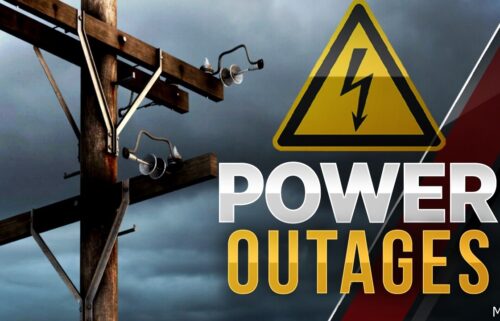SPECIAL REPORT: How private is social media?
Ask desert teenagers what social media they use, and they’ll give you a laundry list.
“Facebook, Instagram, Snapchat,” said a group of teenagers from Yucca Valley.
“How much do you guys use these apps? Be honest,” we asked them.
“Everyday,” said 14-year-old Whitney Nemeth.
“Four hours a day maybe,” said Natasha Nemeth, 15.
Believe it or not, the average teen uses them even more. Try five hours a day clicking away, according to the Department of Health and Human Services.
Many say it’s addicting.
“It’s instant. That is the key, instant feedback and instant communication between all friends,” said Dr. George Araya, who is the director of educational technology for the Desert Sands Unified School District.
Araya is focused on letting kids and parents know the pros and cons of social media.
“Privacy is one of the big issues everyone should be aware of,” he points out.
Aware that privacy really doesn’t exist when it comes to what you put on social media platforms.
Take for example the now infamous celebrity photo leak. Last August, hackers posted nude photos from stars like Jennifer Lawrence and Kate Upton, directly from their private iCloud accounts.
They were then shared and re-shared by people all over the world on various social media site, includding Reddit.
“If it’s on the web, it’s on the Cloud, someone can see it,” Araya said.
“They tell you everything’s private but if everyone can share it I don’t know how that’s private at all,” Whitney said.
We wanted to find out more about apps like Snapchat, which makes photos and videos seemingly disappear within moments of being viewed.
But, while viewing a Snapchat pic, you can hit just two buttons on your phone simultaneously and have a screen shot that lasts forever.
“I think we shouldn’t be posting any nudes anytime soon,” said Melissa Nemeth, 18.
“There’s no boundaries, people can steal it, share it, grab it, do whatever they want with it,” said Krista Coyle of Palm Desert.
Just ask British schoolteacher Sammy Roocroft, who set out to show her 9 and 10-year old students how a private photo can become viral.
Students snapped a pic of her on Snapchat (see video), screengrabbed it, and she uploaded it to Facebook.
The image received more than 20,000 shares from people all over the globe.
“You have to realize anything you post the world is seeing it,” said Kirby of Palm Desert.
“You have to be very careful what you put out there,” said James Conti of Palm Desert.
“That’s the risk of using the internet because it can get out anywhere,” Whitney said.
We decided to try this experiment ourselves.
We took a photo of News Channel 3’s Natalie Brunell on Snapchat and shared it with just one person in the KESQ newsroom. They screengrabbed it and Natalie uploaded it to her Facebook fan page asking people to share, like and comment their location.
“How many people do you think this reached in a week?” we asked people.
“7,000,” guessed Kirby.
“4,000,” thought Coyle.
“1,000?” asked Whitney.
According to Facebook, the photo has reached a total of 322,816 people and counting.
Since April 8, it also got nearly 3,000 shares and comments from people in the U.S., Canada, Australia, even as far away as Baghdad, Iraq. More than 1,500 people ‘liked’ the pic.
Some people even edited their own version of my picture.
“You’re kidding me, well that’s what social media is nowadays,” said Kirby.
“You really need to censor anything you’re putting on there,” Conti said.
“Nothing on the web disappears,” warns Araya. “If you believe you can get away with it, it’s not possible today.”
Snapchat now includes a feature that lets you know when someone screengrabs your picture. But tech-savvy teens found ways to get around that with apps like SnapSpy and SnapKeep, which let you take a screenshot without sending a notification back to the sender.
“I never post anything I would regret because I know that could happen,” said Natasha.
Despite the risks, Araya says social media’s ability to generate mass exposure in minutes can also be a very powerful tool for good.
Social media can help increase your marketability for jobs, fundraise for a good cause, or even report an emergency.
“You can do really good things and we need to emphasize the positive more than the negative but we need to make people more aware,” Araya said.
Aware that no matter what social media platform you’re using, think twice before you share.
“If you’re not posting anything bad, I don’t think it’s that bad,” Whitney said.
“If you’re aware everything you’re doing can be exposed, then you will be okay, and I would say use it,” Araya said.



